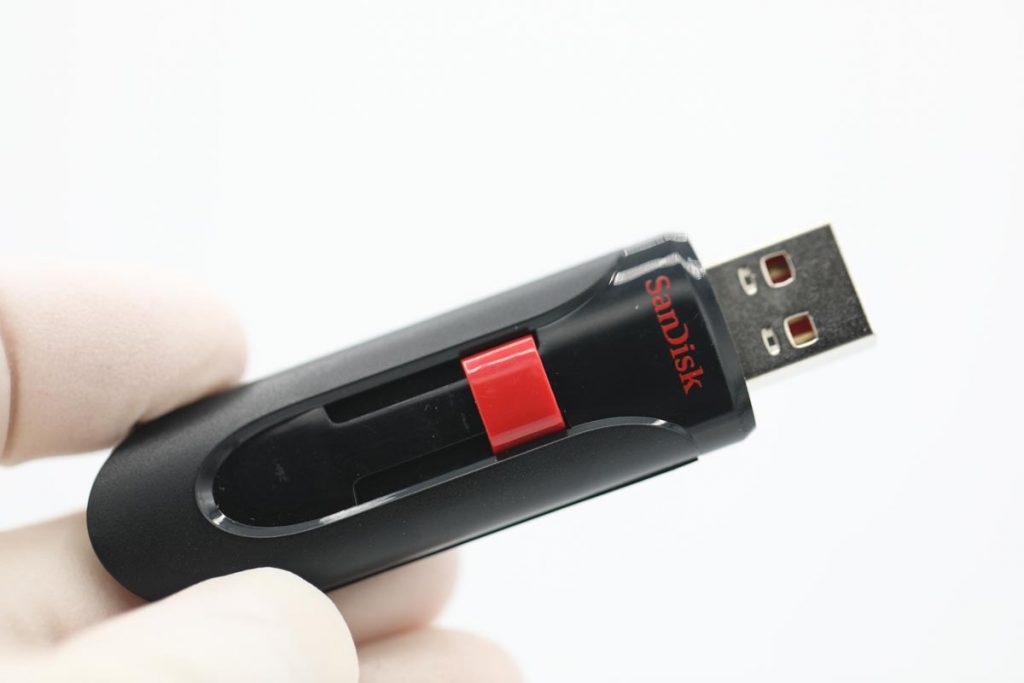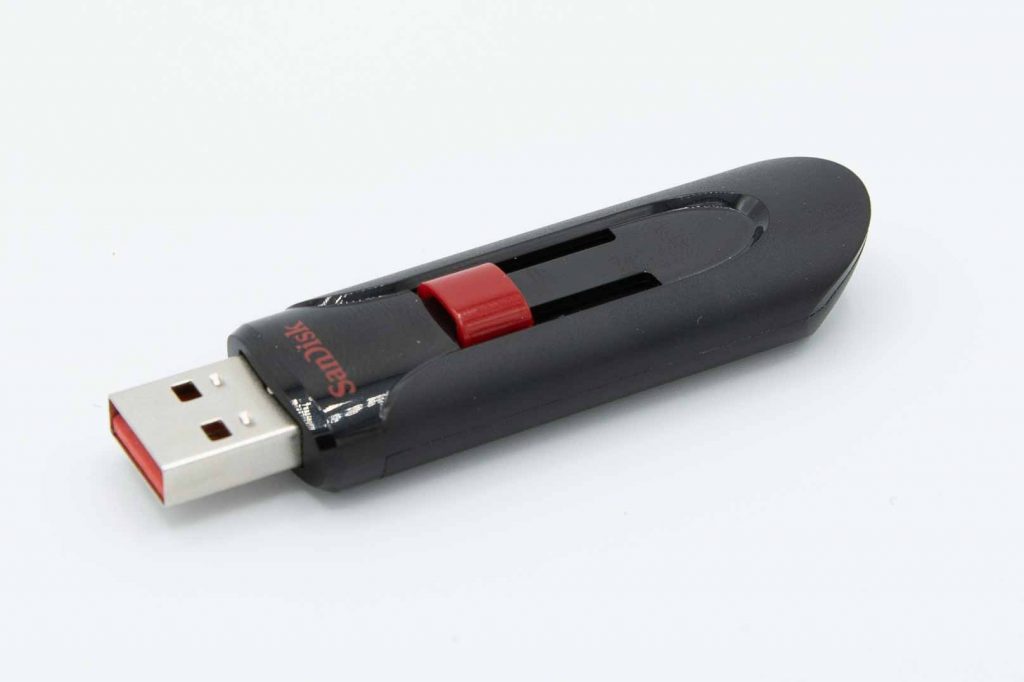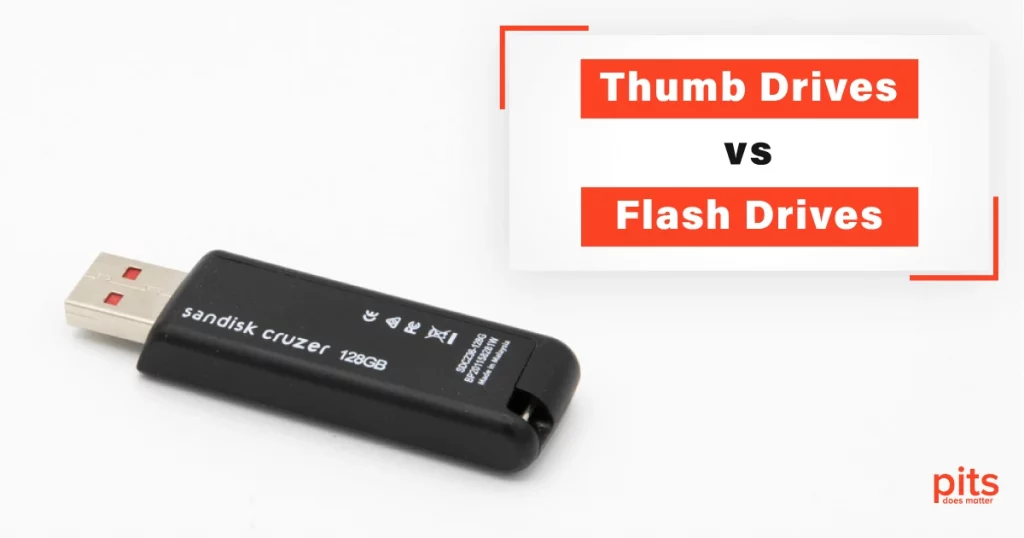Flash drives and thumb drives are portable storage devices that have become an essential part of our daily lives. They are often used to store and transfer data from one device to another. While they are employed interchangeably, the two data storage devices have some differences.
Flash Drive
A flash drive is a small in size, portable storage device used to store data. It is also known as a USB flash drive, USB drive, or memory stick. Flash drives are typically made up of a plastic or metal casing that contains a printed circuit board with a USB connector at one end. The USB connector allows the flash drive to be plugged into a USB port on a computer or other device.
Flash drives use NAND flash memory to store data. This type of memory is non-volatile, meaning it retains data even when it is not connected to a power source. Flash drives are available in various storage capacities, ranging from a few megabytes to several terabytes.
Thumb Drive
A thumb drive is a type of flash drive that is typically smaller in size. It is often called a “jump drive” or “pen drive.” Like flash drives, thumb drives are portable storage devices that use NAND flash memory to store data. Thumb drives typically have a plastic casing that is small to fit on a keychain or pocket.
Thumb drives are an alternative to CD-ROMs and DVDs for transferring data from one computer to another. They are also often used for backing up data, such as important documents and pictures, in case of a computer failure or virus attack. Thumb drives can store up to 64 GB of data —enough to hold approximately 16,000 digital photos.
One advantage of using thumb drives is the speed at which they transfer data; they are much faster than CDs or DVDs. Additionally, they do not require any special software to view their contents and can be shared between computers without the risk of transferring viruses. Finally, thumb drives are relatively low-cost compared to other portable storage devices.
Differences between Flash Drives and Thumb Drives
The terms flash drive and thumb drive are often used interchangeably, but the two have some differences. The main difference between the two media is the size. Thumb drives are generally smaller than flash drives and are often designed to be carried on a keychain or pocket. On the other hand, flash drives are available in various sizes and shapes and are not always intended to be carried around.
Another difference between the two is the capacity. While thumb drives are generally smaller, they typically have a smaller storage capacity than flash drives. This is because the smaller size of the thumb drive limits the amount of space available for NAND flash memory chips. Flash drives, on the other hand, can have larger storage capacities due to their larger size.

There is also a difference in the type of interface used. Thumb drives typically use USB 2.0 or 3.0, while flash drives usually use USB 3.1 or higher. This means that thumb drives are limited to transferring data at slower speeds than flash drives.
Thumb drives are usually less expensive than flash drives. This is because they typically come with fewer features and lower storage capacities. However, the price difference between the two can vary depending on the brand and model.
Overall, both flash drives and thumb drives offer convenient ways to store and transfer files, but they differ in size, capacity, and interface type. Which one you select will depend on your individual needs and preferences.
While these two devices have their differences, they also have similar features. Hence, some users have difficulties when deciding between them.
Similarities Between Thumb Drives and Flash Drives
Flash and thumb drives are digital storage devices that use flash memory to store or transfer files. They are convenient, compact, and lightweight, making them easy to carry anywhere. In terms of physical appearance, flash drives and thumb drives look very similar. They typically have a USB plug on one end to connect to a computer and a smaller body holding the components.
In terms of functions, flash drives, and thumb drives perform the same operations. Both can be plugged into any computer with a USB port to read the stored data. These devices can be used with any operating system.
Transferring data from one storage to another is also possible. Simply inserting the flash drive or thumb drive into the respective ports of each device allows for quick data exchange.
Additionally, both types of storage devices are used by individuals for safely archiving important documents as a backup in case their main hard disk drive (HDD) or solid-state drive (SSD) fails.
Furthermore, manufacturers offer many designs for these storage devices, such as colorful bodies, stylish shapes, and durable materials like metal or rubberized plastic. This makes them an attractive option for consumers who want a personalized experience when using these devices.

Overall, flash drives and thumb drives are very similar in terms of physical appearance, function, and design. They are popular among users because they are compact, lightweight, and offer fast data transfer capabilities. This makes them reliable for storing or transferring important documents between two devices.
When choosing between a flash drive and a thumb drive, consider the size and storage capacity you need. A flash drive may be more suitable if you need a larger storage capacity and are okay with carrying a slightly larger device. If you need a device that is easily portable and can fit on a keychain or in your pocket, a thumb drive may be the better choice. Ultimately, choosing the storage media that meets your specific needs and fits your budget is important.
Frequently Asked Questions
What is a flash drive?
A flash drive is a small and portable storage device that uses flash memory to store data. It is also known as a USB drive, jump drive, or memory stick.
What is a thumb drive?
A thumb drive is a type of flash drive that is small enough to fit on a keychain. It gets its name from its size and shape, which is similar to that of a thumb.
What are the differences between flash drives and other types of storage devices?
Flash drives are typically smaller and more portable than other types of storage devices, such as external hard drives or SD cards. They also use less power and are more durable, as they have no moving parts.
What are the advantages of using a flash drive or thumb drive?
Flash drives are convenient and easy to use, as they can be plugged into any computer with a USB port. They are also a great way to transfer data between devices or to store important files for backup or portability purposes.
Can flash drives or thumb drives be used for long-term storage?
While flash drives and thumb drives can be used for long-term storage, they are not recommended for archival purposes. The data on these devices can be lost or corrupted over time, and they are more susceptible to physical damage than other types of storage media. It is recommended to use a dedicated archival storage solution for long-term data storage.
